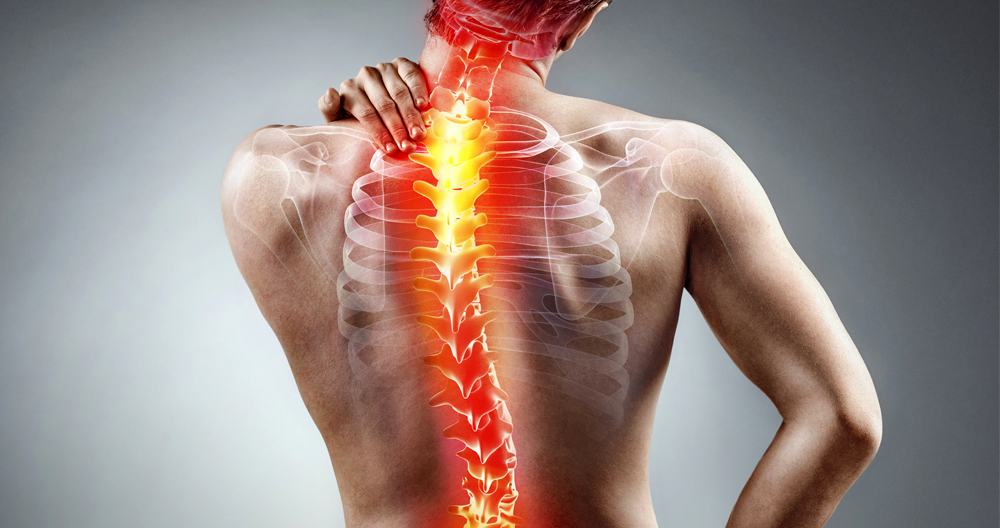
Your spine is composed of multiple bones. The disc cushions each vertebrae and gives them a soft cushiony inside that is protected by a tougher layer. These discs help to protect your vertebrae from injury by helping absorb shocks such as those caused by running, lifting, or walking.
A herniated disc is the result of the inner gel-like portion protruding from the hard covering. A “slipped” disc is another name for a herniated or ruptured disc. If untreated, it can lead to severe complications. Like all conditions, herniated Discs can be treated quickly and efficiently.
Could I Have An Herniated Disc
You might not expect back pain to strike. It can happen when you are sitting in front of the TV and then you get up and try to get up. Your lower back feels numb. Do you think you might have a herniated or slipped disc? You might. 24 bones are made up of the adult spine. Some vertebrae are cushioned with soft discs made from a jellylike substance. These soft discs allow you to move your spine around and to bend over. A disc that is between two vertebrae can slip out of position and cause extreme pain. The condition is called a herniated, ruptured, or slipped disc.
These factors cause Herniated Discs
It is important to understand the symptoms and causes of herniated discs so that you can determine whether or not this condition may be present in you. Age-related wear is the main cause of herniated spines. Other causes of herniated discs include lifting heavy objects, sudden twisting, turning, or having a physically demanding occupation.
Herniated discs occur as we age. The discs in our spines shrink due to the loss of their protective water content. People who are overweight have a greater chance of developing herniated spines, as their spines must bear extra weight.
Signs of an Herniated Disc
The pain location may be one indicator. Though herniated spines can happen anywhere on your spine they are most common in your lower backbone, or the lumbar spine, just above your hips. The pain may radiate from your back to your buttocks or thighs to your calves.
A herniated disc can make your symptoms worse if you are actively involved in activities and more comfortable when you’re relaxing. Your symptoms can be aggravated by sitting, coughing, and sneezing. They put pressure on the nerves. The sensation of tingling, or numbness that can result from a herniated nerve can also be caused by a herniated spinal disc. It is possible for the affected side of your back to feel weak.
Age is another factor. As you age, your discs start to wear down and lose their cushioning. It is much more likely to have a herniated or damaged disc.
Diagnosis Herniated Disc
Visit your doctor to find out if you have a herniated or bulging disc. A doctor will likely perform an exam to locate the source of your pain. This is usually all you will need to confirm the diagnosis. Your doctor may examine your back to see if there are any painful or red spots. Your doctor might ask you to lie flat on your back and raise or move your legs in specific ways. If you feel pain, it is most likely a herniated distal.
They might also test:
- Your reflexes are at the knee or ankle
- Your leg strength
- How you walk on your heels.
- It doesn’t matter if you feel vibrations or light touch.
You may have further testing done by your doctor to rule other causes of your pain and pinpoint aggravated nerves.
- X-rays. A standard X Ray will not show if there is a herniated or bulging disc. However, it will show your doctor the outline and rule any other possible causes of your pain, such a fracture or tumor.
- Myelogram. This test uses dye injections into your spinal fluid to detect pressure on the spinal cord.
- CT scan. CT scan. This scan uses multiple X Rays from different angles. It creates images of your spinal cord, and all structures surrounding it.
- MRI. An MRI uses radio waves, a magnetic force, and a computer in order to create detailed 3D images. MRI images can pinpoint the position of the herniated spinal disc, show the interior, and identify which nerves are affected.
- Electromyograms (EMG). These tests might be performed by your doctor to assess if nerves have been damaged or compressed. The EMG test detects the tiny amount that muscle cells generate when they are stimulated with nerves. A needle electrode placed in a muscle records the electrical activity of the muscle and checks for any anomalies.
- Nerve conduction tests (NCS) can often be done in the same way as the EMG. An electrode stimulates nerves with small electrical impulses. The electrodes on one side detect impulses from the other. You can tell if there has been nerve damage by how long it takes for the electric impulses to travel from electrode to electrode.
How to recognize warning signs and when to consult a doctor
Your doctor may recommend nonsurgical treatments like pain-relieving medicines and a guided program of physical therapy. A referral to an interventional physician for image-guided Lumbar Injections can also be made. These injections will reduce inflammation and help relieve pain.
Your doctor should be consulted immediately if you have any problems controlling your bowel or bladder movements, numbness within your inner thigh, genital area, or difficulty starting urination. Cauda Equina syndrome can occur when you experience these symptoms. It is possible to have severe lower back disc injuries.